Abstract
In leaves of pangolagrass (Digitaria decumbens Stent.), the proportion of photosynthate partitioned into starch adjusts to a change in daylength within 24 hours. After a single 14-hour long day, the relative starch accumulation rate is approximately 50% of that under 7-hour short days. This rapid response was exploited to study the light requirement for the perception of changes in daylength. It was found for short day-grown plants that: (a) 7-hour daylength extensions with dim white light (below the light compensation point for photosynthesis); (b) 7-hour daylength extensions with dim far red light (wavelengths greater than 690 nanomoles); or (c) 0.5-hour night-break irradiations with bright white light were all capable of producing about one-half of the effect of a 7-hour daylength extension with bright light. However, long periods of bright light were not required for a complete effect, since a 7-hour shifted short day (i.e. beginning 7 hours later than usual) was as effective as a 14-hour-long day itself. There was also a critical daylength between 11 and 12 hours for the transition between short-day and long-day partitioning patterns. Photoperiod determination depends, at least in part, on a nonphotosynthetic photoreceptor sensitive to both visible and far red irradiation. The duration of the photosynthetic period, as shown in experiments with low-pressure sodium lamps, does not by itself determine the response to daylength.
Full text
PDF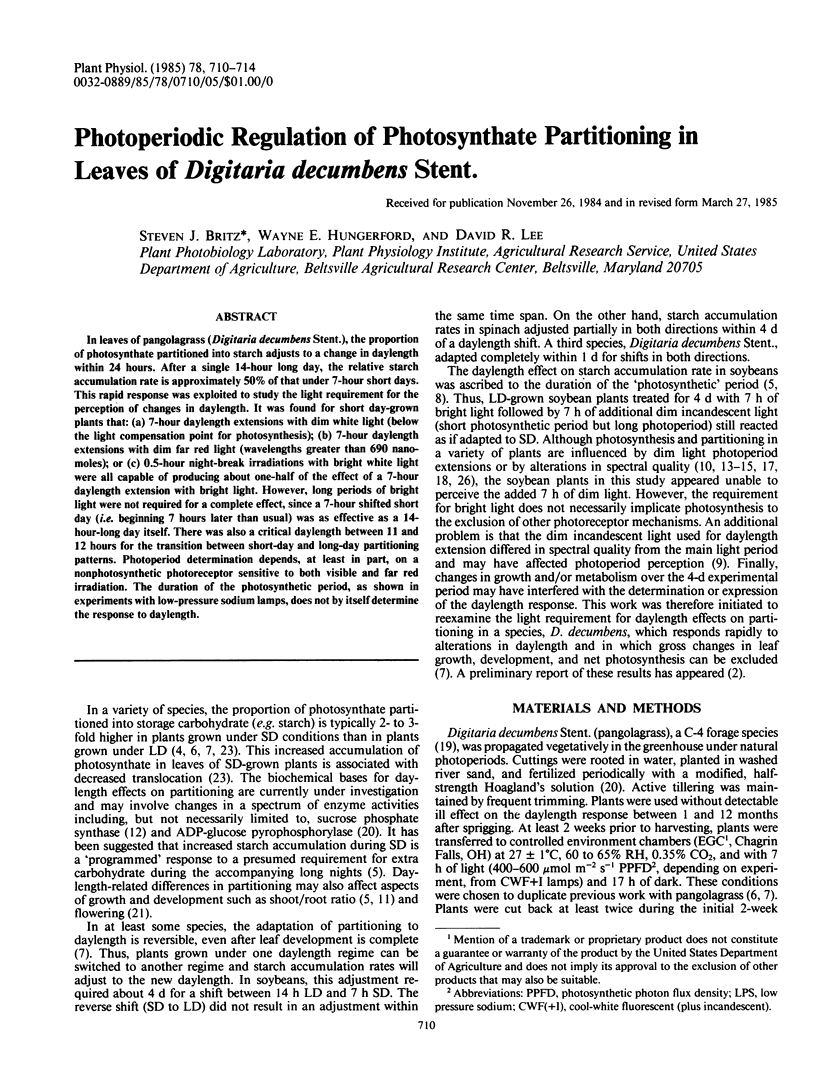
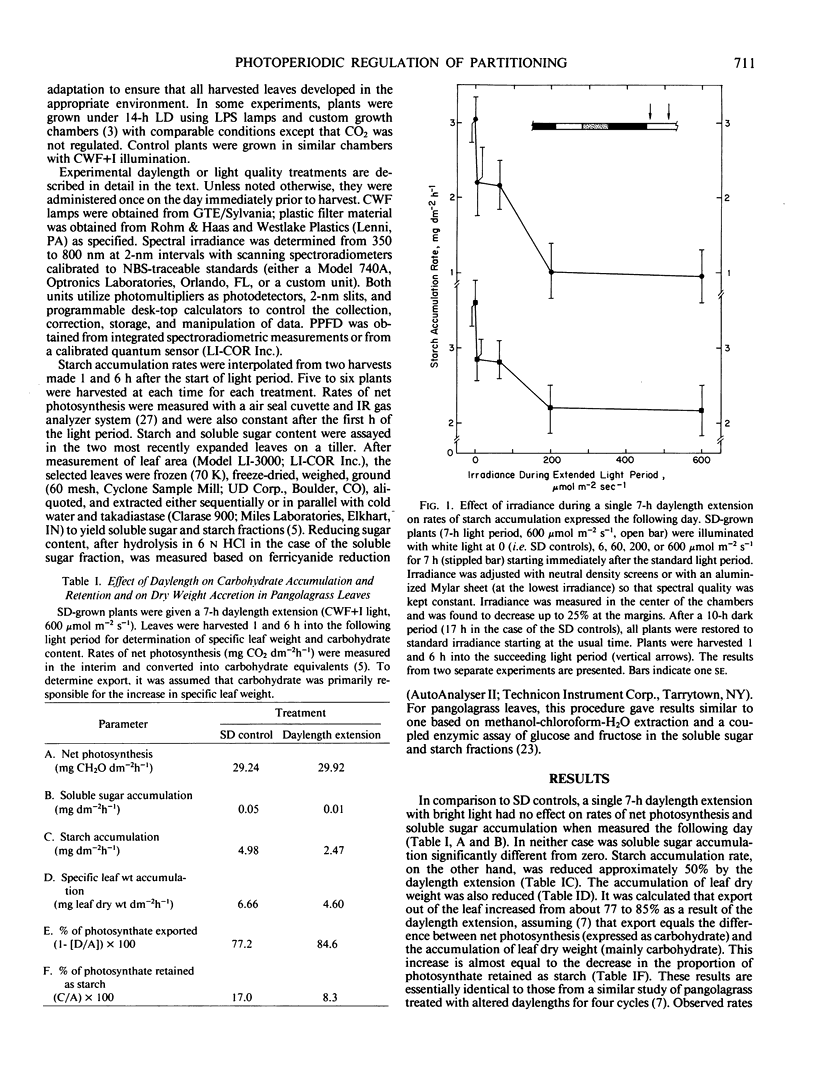
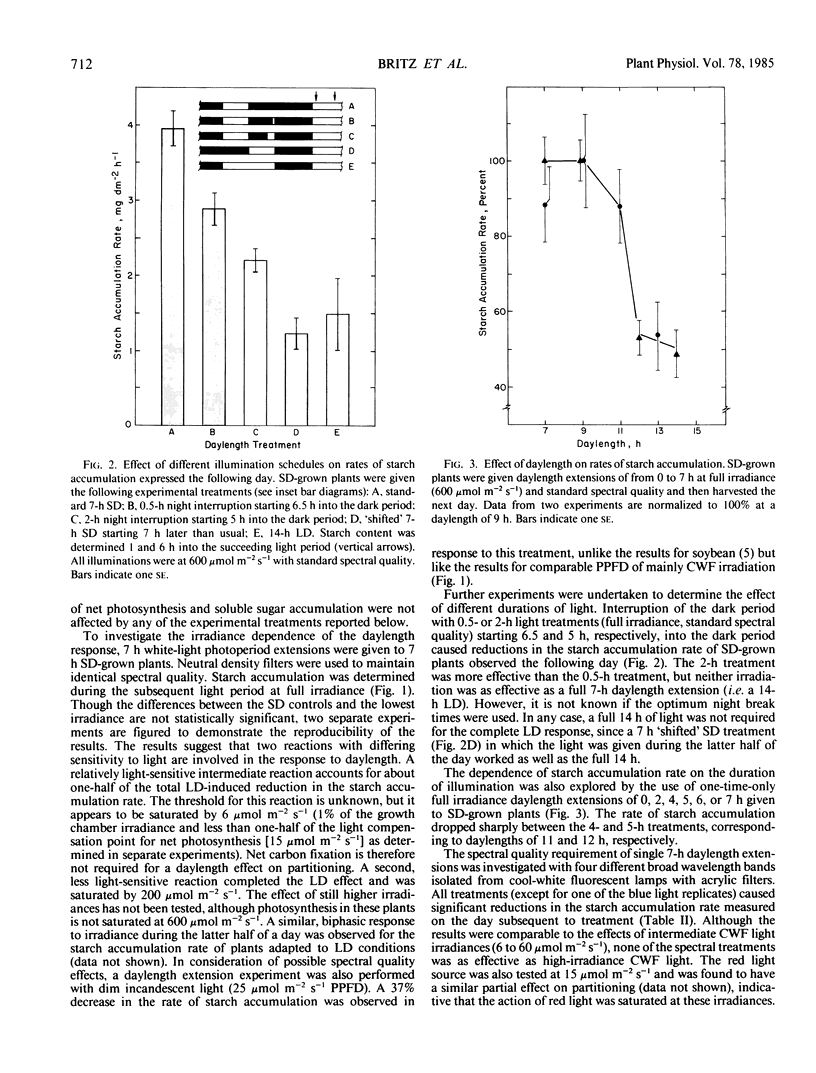
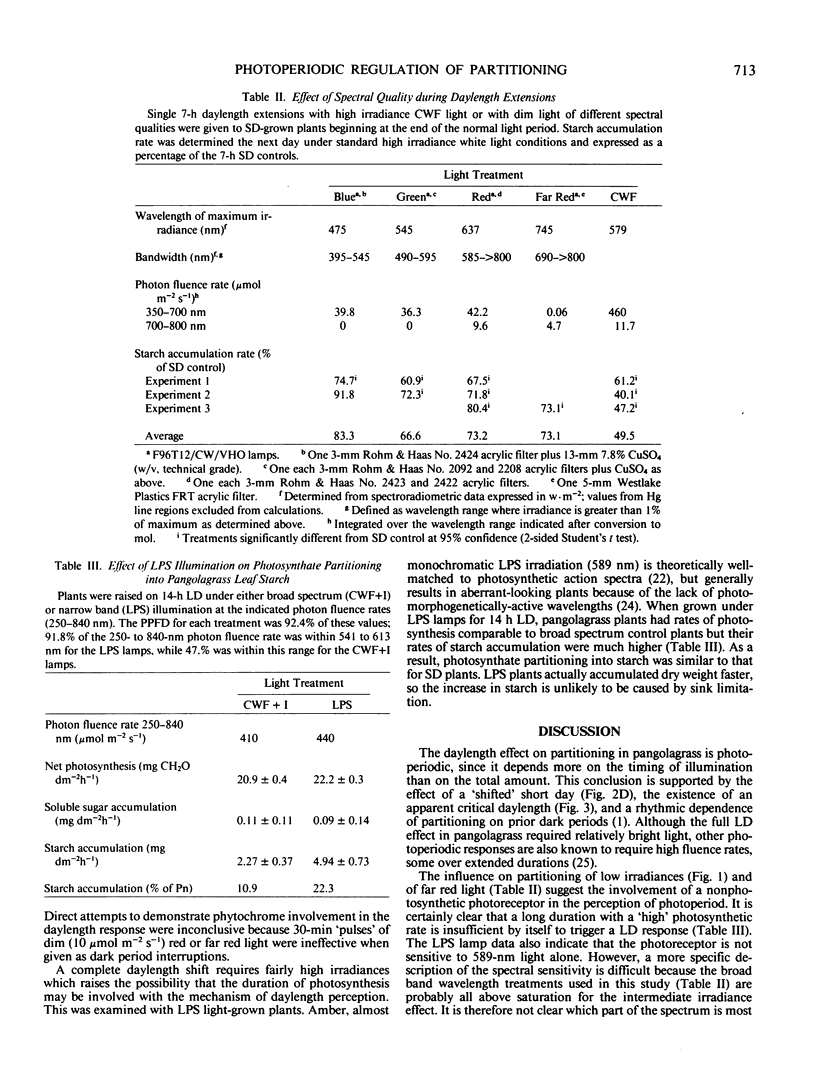
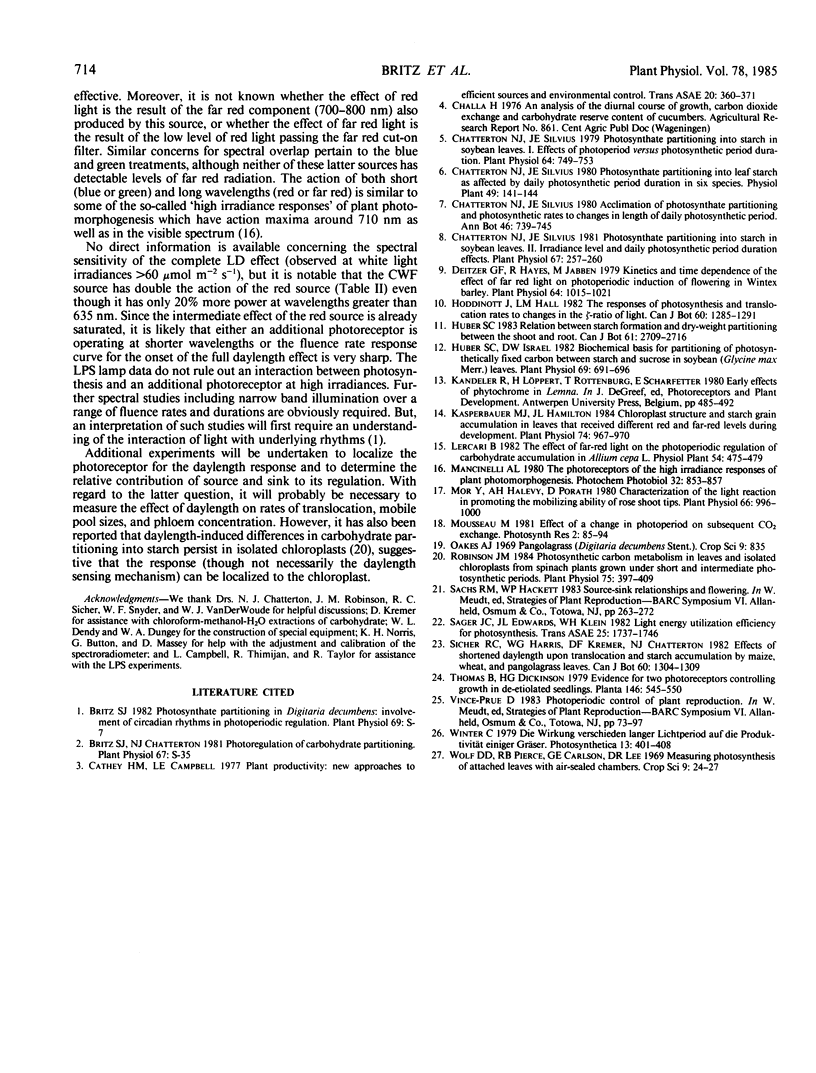
Selected References
These references are in PubMed. This may not be the complete list of references from this article.
- Chatterton N. J., Silvius J. E. Photosynthate Partitioning into Starch in Soybean Leaves: I. Effects of Photoperiod versus Photosynthetic Period Duration. Plant Physiol. 1979 Nov;64(5):749–753. doi: 10.1104/pp.64.5.749. [DOI] [PMC free article] [PubMed] [Google Scholar]
- Chatterton N. J., Silvius J. E. Photosynthate Partitioning into Starch in Soybean Leaves: II. IRRADIANCE LEVEL AND DAILY PHOTOSYNTHETIC PERIOD DURATION EFFECTS. Plant Physiol. 1981 Feb;67(2):257–260. doi: 10.1104/pp.67.2.257. [DOI] [PMC free article] [PubMed] [Google Scholar]
- Deitzer G. F., Hayes R., Jabben M. Kinetics and time dependence of the effect of far red light on the photoperiodic induction of flowering in wintex barley. Plant Physiol. 1979 Dec;64(6):1015–1021. doi: 10.1104/pp.64.6.1015. [DOI] [PMC free article] [PubMed] [Google Scholar]
- Huber S. C., Israel D. W. Biochemical Basis for Partitioning of Photosynthetically Fixed Carbon between Starch and Sucrose in Soybean (Glycine max Merr.) Leaves. Plant Physiol. 1982 Mar;69(3):691–696. doi: 10.1104/pp.69.3.691. [DOI] [PMC free article] [PubMed] [Google Scholar]
- Kasperbauer M. J., Hamilton J. L. Chloroplast Structure and Starch Grain Accumulation in Leaves That Received Different Red and Far-Red Levels during Development. Plant Physiol. 1984 Apr;74(4):967–970. doi: 10.1104/pp.74.4.967. [DOI] [PMC free article] [PubMed] [Google Scholar]
- Lilley R. M. Isolation of Functionally Intact Rhodoplasts from Griffithsia monilis (Ceramiaceae, Rhodophyta). Plant Physiol. 1981 Jan;67(1):5–8. doi: 10.1104/pp.67.1.5. [DOI] [PMC free article] [PubMed] [Google Scholar]
- Mor Y., Halevy A. H. Characterization of the light reaction in promoting the mobilizing ability of rose shoot tips. Plant Physiol. 1980 Nov;66(5):996–1000. doi: 10.1104/pp.66.5.996. [DOI] [PMC free article] [PubMed] [Google Scholar]
- Robinson J. M. Photosynthetic Carbon Metabolism in Leaves and Isolated Chloroplasts from Spinach Plants Grown under Short and Intermediate Photosynthetic Periods. Plant Physiol. 1984 Jun;75(2):397–409. doi: 10.1104/pp.75.2.397. [DOI] [PMC free article] [PubMed] [Google Scholar]


